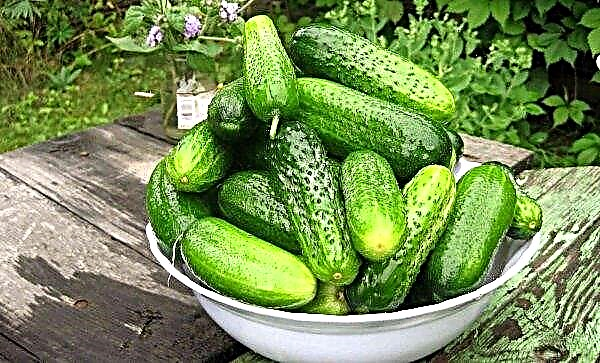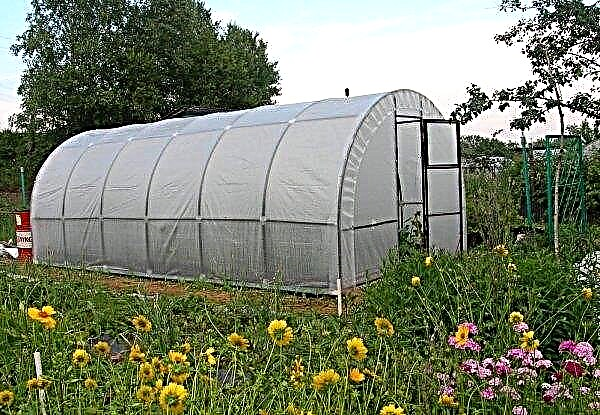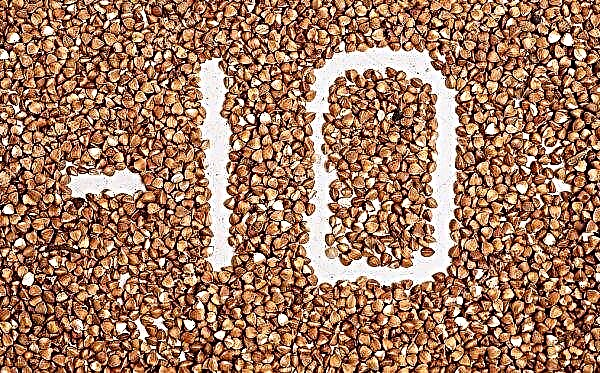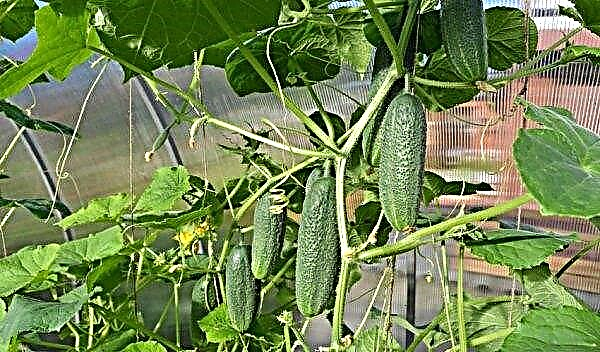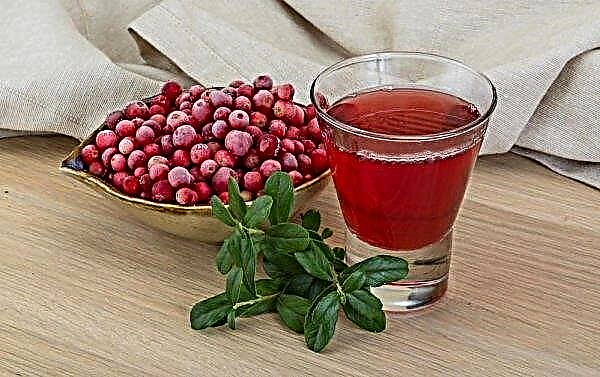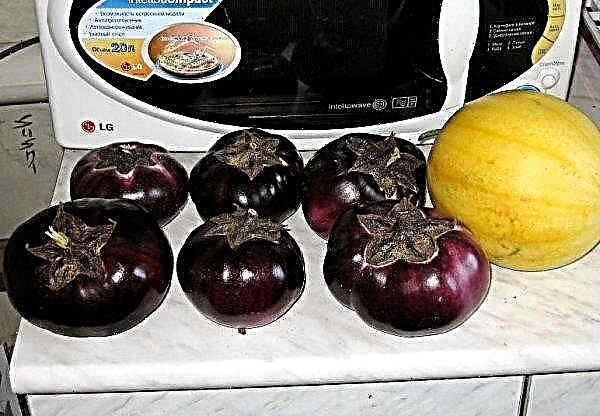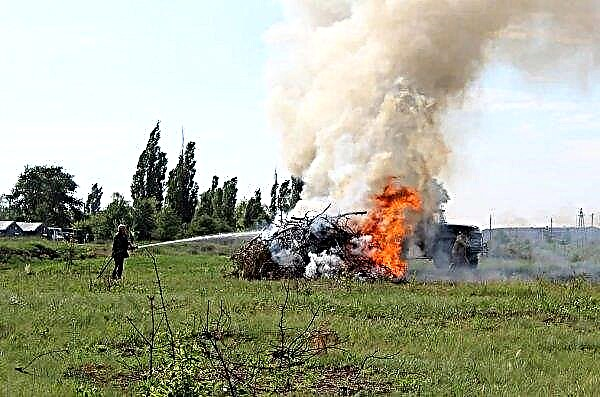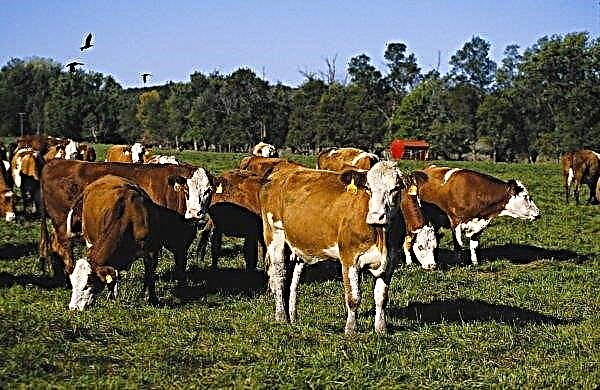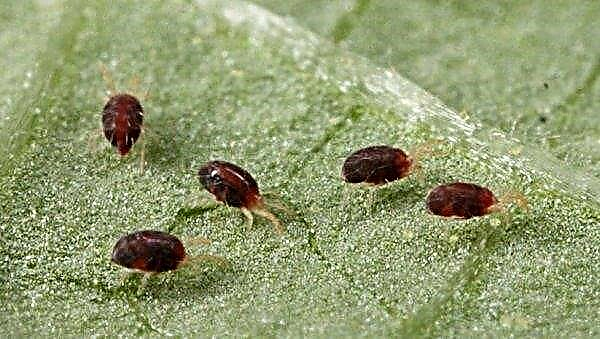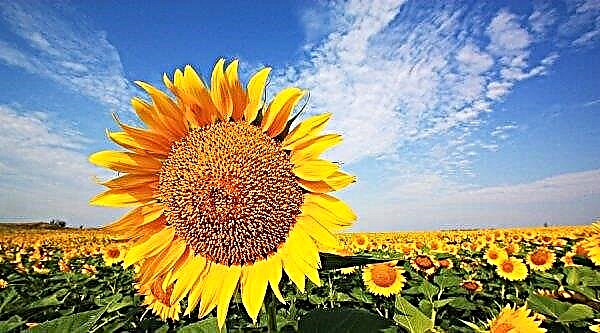Pit hydrangea is a bush that is shaped like a tree. Only 2 species are suitable for this - tree-like and panicled hydrangeas. Their cone-shaped large inflorescences, located among the green foliage on a round crown, look very impressive. For detailed information on how to grow hydrangea on a stem with your own hands, read the material.
Hydrangea on the stem in landscape design
In botany, a stem is called a tree trunk itself. Or rather, that part of it that starts from the soil and ends near the skeletal branches. Hydrangea (lat. Hydrángea) is a genus of shrubs 1-3 m high. The formation allows you to give some of its varieties and varieties the shape of a real tree.

The bush formed on the stem is used in landscape design as an accent plant. You can decorate the alley with such trees or plant along the walking paths in the recreation area. Hydrangea is especially valuable because it blooms throughout the summer.
How to form panicle hydrangea on a stem
The easiest way to form a stem is to prune “unnecessary” branches from a seedling.
- Shoots that are unnecessary will be:
- grow from the root system, except for the central one;
- lateral, which are formed on the trunk of the main shoot to the point from which the formation of the crown begins.
Further pruning is organized by pinching the tops, as a result of which branching begins.
Did you know? French naturalist Philibert Commerson brought hydrangeas to Europe from Mauritius in Europe in 1767. It was he who gave her the name. Historians believe that this was done in honor of a beautiful lady.
The second way is to get the stem by vaccination. Some cultivars of shrubs and trees are formed by planting on a more hardy rootstock a branch of the same plant that they are going to grow, but of a different variety.

This makes the resulting new tree or bush resistant to diseases, increases frost resistance and sets certain growth habits. In relation to shrubby forms, such a combination is very convenient if you take a tree-like base (scion) and plant the desired bush variety on it.
Vaccination as a way to get a standard form
With this method of reproduction, the stock plays the role of a trunk (stem), and the scion plays the role of a crown. The peculiarity of tree formation is to first form a good straight trunk, and then plant the desired varieties on it.
Important! The graft is vulnerable to freezing temperatures. Therefore, they are vaccinated only when they are sure that the air temperature will not fall below +5°WITH.
The formation of the stem and vaccination step by step:
- A strong bush of paniculate or tree hydrangea is planted in the ground.
- The central trunk is tied to the support, and the remaining shoots are removed. If you are in doubt about which escape to choose, then you can leave 2 of them. Grow both until you see which one is stronger. Then remove the weaker one,
- Having left 2 shoots, the gardener annually removes those branches that will be formed next to them from the roots.
- Having visually imagined the point from which the crown will begin to form, he cuts off all the side branches located on the trunk below.
- After 2-3 years of growth, the tip is pinched. In this place, a bush hydrangea branch is inoculated into a T-shaped incision. Some gardeners plant a viburnum or lilac on a bush. These are plants with a more pronounced tree-like strain. Therefore, creating a tree with viburnum stock is easier than growing a stem for standard hydrangea specifically.
- Vaccination is carried out in the spring, so that sap flow has already begun in the stock. The air temperature is approximately + 5 ° С ... + 10 ° С. The buds on the branch to be vaccinated should not be opened.
- For vaccination, choose a healthy shoot 1-2 years old. The cut is made smooth and even. The cut angle is 45 °.
- Cows cut up to 4 cm long on the rootstock, and then it is carefully bent.
- Connect the scion cut site with the trunk. Close the bark.
- They are fixed with twine.
- Cover all edges of cuts and cuts with garden varnish.
- With successful connection, after 2 weeks, a scar forms under the bark, which indicates that the tissues are connected.
- In the future, you need to monitor the state of the vaccine: cover up the damage, correct the fixing material if necessary. If the stalk has grown, then the fixing materials are removed.
- All this time the plant is well watered.
 Inoculation of hydrangea in the split: a - in the upper part of the trunk, a vertical incision (split) is performed, to a depth of 3-4 cm .; b - a wedge-shaped cut is made on the hydrangea shank for scion; b - the handle is inserted into the cleft and tightly bandaged with a film; in - the upper part of the scion (above the upper kidney) is cut off, after which this cut point is carefully treated with garden var.
Inoculation of hydrangea in the split: a - in the upper part of the trunk, a vertical incision (split) is performed, to a depth of 3-4 cm .; b - a wedge-shaped cut is made on the hydrangea shank for scion; b - the handle is inserted into the cleft and tightly bandaged with a film; in - the upper part of the scion (above the upper kidney) is cut off, after which this cut point is carefully treated with garden var.
Obtaining the stem using the formation
The future standard tree, like any other bush, is planted in open ground, for which they select a sunny area. It should be protected from the wind, and between the hydrangea and the airflow vector there should be a building, a hedge or a larger tree.
Step-by-step instruction for forming a stem:
- A support pillar is installed near the central trunk. He is needed to form a direct boom. If hydrangea has several shoots now, then you need to remove everything except the central one, tied to a support.
- During the growing season, shrub care will be standard. It is only required to cut off the shoots that will begin to fight off the central trunk.
- Thus, the bush can grow a couple of years, until the trunk rises to a height of 0.7–1.0 m. Now it is necessary to pinch the top of it and not remove the side shoots, which will become a crown.
- Next year, pinch each of the shoots. As a result, branching will begin.
- The tree will be fully formed 7-8 years after planting in the garden. But its shape needs to be maintained regularly.
 1 - planted young plant with buds; 2 - spring shortening of the shoot; 3 - bending continuation shoot; 4 - pinch of shoots of the current year; 5 - removal of last year's shoots for the formation of the stem; 6 - removal of shoots formed on the stem; 7 - formation of the crown from the shoots of last year; 8 - shtamb with a height of 0.5 - 1 m.
1 - planted young plant with buds; 2 - spring shortening of the shoot; 3 - bending continuation shoot; 4 - pinch of shoots of the current year; 5 - removal of last year's shoots for the formation of the stem; 6 - removal of shoots formed on the stem; 7 - formation of the crown from the shoots of last year; 8 - shtamb with a height of 0.5 - 1 m.
Also pay attention to the fact that on the Internet you can see photos of boles formed from several shoots intertwined with each other. This form is also possible. But you need to braid the branches immediately from the first year after planting. From lignified this form does not work.
Care for standard hydrangea
A plant that is formed by a strain or grafted needs more careful care than usual.
He needs:
Check out

- regular watering;
- the presence of sunlight at least 6 hours a day;
- periodic fertilizer application.
It is also important to take timely measures to prevent infection of the strain with diseases and pests. Keeping fit should be done regularly. It is also important to remove emerging inflorescences in the early years if the tree is shaped by grafting. This is necessary to enable the scion to gain strength.
Best neighbors for hydrangea
Hydrangea is the queen of the southern garden. And while she is protected from the scorching afternoon sun, she receives enough fertilizer and water, she will delight others with large inflorescences and dark green beautiful leaves. And like every accent plant, it will need an appropriate environment.

The peculiarity of most flower gardens is that in the year there will be only a couple of weeks of flowering, and then the flowers wither and this area becomes “boring”. To ensure the duration of flowering, plants are planted so that they complement each other: bloomed before, simultaneously and after hydrangea.
Flowering perennials, such as zinnia and snapdragons, will add to the flower bed attractiveness. If the emphasis is on high hydrangea, then ornamental herbs should not be distracting. Use fescue. This is a decorative herbaceous plant that grows well on any type of soil and does not require special care.
Did you know? In India, there is a legend that hydrangeas fell to the ground on the day the Buddha was born.
Plant a posh host. She needs the same conditions for development as hydrangea, characterized by low growth and beautiful leaves. Among the many forms and shades of the hosts, you can choose the ones that you like more. Tall hydrangeas are combined with low, such as heather, flowering herbs. They should cover the foot of the bush. After all, inflorescences bloom at the tops of the shoots, and the lower part turns out to be bare.

For this, several color schemes are used:
- planting plain flowers;
- or contrasting to the base plant.
For example, white hydrangea can complement lilac irises, heather, pink geranium. If desired, you can plant white irises. If we talk about compatibility, then hydrangea prefers acidic soil. Most flowering shrubs coincide with this parameter in this parameter: roses, viburnum, as well as lilies, asters, peonies, zinnias, lupins and other flowering plants.
Important! It is not recommended to plant only very bright flowers near hydrangea, they do not harmonize with pastel shades and will distract attention.
As for the background, there are planted conifers, against which blooming shrubs look great. Conifers can protect hydrangea from cold winter winds. Dogwood and spirea will also look good next. Do not plant hydrangeas under the trees. Their powerful root system will take away moisture and nutrients from shrubs. As a result, the shoots will not be so numerous and very few inflorescences will be laid on them.

Top dressing
Each plant in the process of growth consumes nutrients from the soil. Therefore, they need to be added from time to time again.
For hydrangeas, it is recommended to carry out several dressings:
- The first is carried out in the spring in April. These are complex fertilizers in which nitrogen, phosphorus and potassium are present in the same proportion. For example, 10-10-10, where the numbers indicate the percentage of each component in the solution. Complex fertilizer can also be replaced by separate application. The kit will include urea 15 g, superphosphate 30 g and potassium sulfate - 15 g. They are dissolved in 10 l of water and brought under the bush.
- 3 weeks after the first feeding, it is repeated. The components that are included in it provide intensive vegetation, the development of the root system and the beginning of budding.
- At the beginning of June, just before flowering, a third top dressing is made. It will consist of potassium sulfate 50 g and superphosphate in an amount of 70 g.
- When flowering is in full swing, top dressing from potassium sulfate and superphosphate is repeated. In the future, it can be used once a month during the entire flowering. The main thing is to exclude nitrogen from the introduction, since it has already fulfilled its role.

Watering
In order to understand the general technology of irrigation, pay attention to the decoding of the name "hydrangea". Translated from Greek, “hydro” means water, and “Angos” means a vessel. Therefore, the plant needs regular watering and there should be plenty of water. In dry weather, you will need to pour about 20 liters of water under each bush. Frequency of application - weekly.
Watering begins in early spring and continues until the fall, until they begin to fall off the leaves. If it rains, then irrigation is reduced. If it is not possible to provide regular watering, sprinkle with mulch the root zone. You can use chopped straw, needles, bark or synthetic materials.
 The purpose of the layer is to prevent the rapid evaporation of moisture and inhibit the growth of weeds.
The purpose of the layer is to prevent the rapid evaporation of moisture and inhibit the growth of weeds.
If there is no mulch, then after watering, loosening is mandatory. This removes the roots of weeds, organizes the access of air to the lower layers of the soil. Without it, the roots of plants begin to deteriorate and conditions are created for the development of root rot.
How to hide the standard hydrangea for the winter
Before you begin preparing for wintering, check the frost resistance of your variety. If it is intended for the 3rd winter hardiness zone with a minimum temperature of -40 ° C, and grows in the 5th with a minimum temperature of -29 ° C, then it can winter without shelter. It is believed that all varieties of panicle and tree hydrangeas are winter-hardy, tolerate frost well and do not need shelter.
Did you know? Buddhists believe that sweet tea from hydrangea leaves has magical properties.
A young plant, regardless of variety, must be protected from frost. For this, as soon as the temperature drops to 0 ° C, a layer of mulch is placed in the root zone. Its thickness is up to 20 cm. It will serve as insulation between the root system and frosty air. It will also keep the soil temperature stable. It's no secret that the roots are damaged by frost, when the soil freezes sharply and ice crystals push the rhizomes out of the ground, damaging them. You also need to protect the inherent color buds.
 To do this, install a metal mesh around the bush and fill it with fallen leaves. Chestnut or maple leaves are recommended. It is believed that they do not rot during the winter. And do not recommend falling asleep leaves of fruit crops.
To do this, install a metal mesh around the bush and fill it with fallen leaves. Chestnut or maple leaves are recommended. It is believed that they do not rot during the winter. And do not recommend falling asleep leaves of fruit crops.
Well-proven shelter with spruce branches. It can be placed both separately and on top of the leaves. Another popular way to create a shelter is to cover the burlap frame in 2-3 layers, but leave vents so that air can circulate. Otherwise, it will be too hot under the shelter.
Why hydrangea does not bloom and what to do
Probably the main reason for non-bloom is pruning at the wrong time. Hydrangea macrophylla (Hydrangea macrophylla) forms flower buds in the summer - the year before. AND you could cut the buds of the new season along with the shoots. Therefore, you need to trim the plant only at the end of winter. And this year, it remains to wait until new buds are laid and the bush blooms next year.
If the kidneys are damaged during the thaw, then there will be no flowers. Ice crystals can break them at the moment of freezing after warm, but wet weather. Twice a year, flowering shrubs overcome this problem, as they then form buds on new stems. But the flowering of those who do this only once a season becomes impossible.

Another reason is related to lighting. Panicled hydrangea (Hydrangea paniculata) needs morning and afternoon sun. If she lacks light, then there may not be flowers. The next reason is an excess of nitrogen in the fertilizer applied. An excessively fertilized bush will be distinguished by an abundance of shoots and foliage. But there will be no flowers on it. It is recommended to water the bush abundantly in order to wash off the excess fertilizer in the lower layers of the soil.
Planting a variety in a frost resistance zone that does not match its capabilities will also leave the gardener without flowers. For example, a variety intended for the 5th winter hardiness zone (with a temperature of -29 ° C) will never bloom in a colder one. Its flower buds will regularly die from the cold.
Important! Hydrangea bushes are recommended to be renewed every 4-5 years. During this time, they develop their resource and begin to bloom much less.
Growing hydrangeas, like other flowering shrubs, can be a very exciting activity. Especially if the gardener is engaged in the cultivation of unusual varieties and forms. And if you manage to do this, then you may well try to grow hydrangea on the stem.

